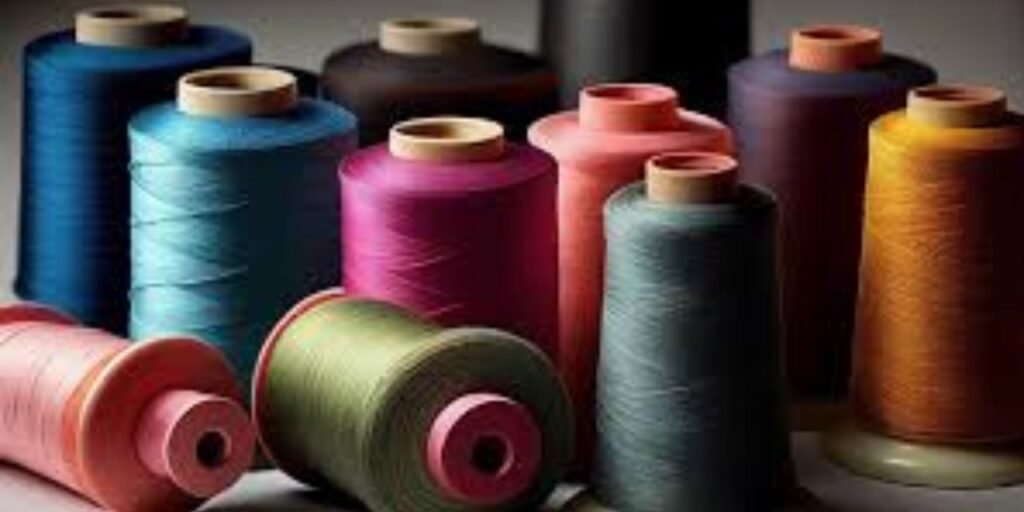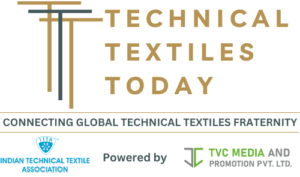Creating the Future: India’s Audacious Textile Innovation Advancements

India’s textile sector, which expertly combines cutting-edge innovation with centuries-old traditions, is the focus of attention worldwide. India, one of the world’s biggest manufacturers of textiles, is well-positioned to maintain its position as a leader in the face of rising demand for high-performance textiles, sustainability, and competitive supply. chains. India’s textile industry is leading the way in a significant economic and employment boom, with projections indicating that it would reach USD 350 billion by 2030 and create 35 million new jobs.
A CULTURAL AND ECONOMIC PILLAR
A pillar of the Indian economy, the textile sector directly employs approximately 45 million people and indirectly employs another 55 million people along the value chain. It also contributes 2.3% of the country’s GDP.
It is the second-largest source of employment after agriculture and is essential to women’s empowerment and rural development. With the use of advanced technology, a strong economic foundation, worldwide reach, and strong government backing, the industry shows a great deal of promise as a world leader.
From mass-produced apparel and technology textiles to traditional handwoven fabrics like silk and khadi, the sector’s wide range of goods has bolstered its reputation internationally and stimulated economic growth.
While maintaining the cultural heritage ingrained in India’s handlooms, this type supports a well-developed supply chain that stretches from manufacturing to retail and covers the whole spectrum from farm to fibre, fabric, fashion, and overseas markets.
WORLD COMPETITIVENESS: EXCELLENT LEADERSHIP
India’s capacity to manufacture a wide range of textiles at affordable costs is drawing in international merchants and brands. However, maintaining competitiveness is necessary as consumer preferences and fast fashion change quickly.
beyond cost effectiveness alone. For this reason, Indian producers are increasingly improving their design skills, predicting international trends, and providing adaptable goods that satisfy discriminating customers.
The transition from conventional outputs to high-value technological textiles, which serve sectors including healthcare, automotive, and agricultural, is significant. Additionally, India is increasing its use of synthetic fibre and decreasing its excessive reliance on cotton as it recognises the need to balance fibre dependency.
production—a calculated move that has helped China take the lead in the world’s textile exports. The establishment of the multimillion-dollar National Technical Textiles Mission (NTTM), which aims to increase India’s worldwide leadership in the technical textile sector, further supports this change.
GOVERNMENT SUPPORT HARNESSING
The expansion of the textile sector has been greatly aided by the government. Among the major projects are
PM MITRA Textile Parks: To establish a cohesive environment that expands manufacturing facilities for increased cost-effectiveness and efficiency
SAMARTH (Scheme for Capacity Building in Textile Sector): Designed to upskill the workforce, increasing the industry’s overall productivity and quality standards through targeted training programs; National Technical
Textiles Mission: Driving R&D to elevate India’s position in global markets; Production Linked Incentive (PLI)
Scheme: Encouraging investment in MMF fabrics and apparel, alongside technical textiles, to boost innovation and production capacity
A STRATEGIC NEED: SUSTAINABILITY
Indian businesses are setting the norm for ethical labour practices, waste minimisation, and the use of renewable energy as the demand for sustainable sourcing grows worldwide.
In addition to satisfying environmental requirements, this move towards sustainable practices provides strategic opportunities to improve India’s standing internationally. In the sector, using solar energy and water-efficient procedures is currently becoming more and more commonplace. Additionally, at a national level A task group made up of important stakeholders is systematically laying out a plan for sustainable products, enhancing India’s standing as a worldwide leader in sustainability initiatives.
HELPING TO COVER THE SKILL GAP
The industry’s reliance on a large workforce is a key advantage as well as a strength. While traditional techniques like weaving and dying remain vital, the use of automation, computer-aided design, and The need for technical competence is rising as a result of sophisticated industrial technology. Initiatives for skill development are crucial to creating a workforce that is inclusive and prepared for the future, particularly in rural regions. Additionally, customised training initiatives aimed at women and under-represented groups promote gender diversity and inclusiveness, creating a more just business environment on a global scale.
INDIA’S STRATEGIC ADVANCES IN THE TEXTILE SECTOR: POWERING GLOBAL TEXTILE INNOVATION
India’s textile sector is at the forefront of global innovation, establishing new textile standards. market via technical innovation and strategic expansion. The use of synthetic fibres (MMF) improves market stability and flexibility by diversifying India’s raw material base and coordinating with important global trends.
India’s industrial skills have been enhanced by significant technology expenditures, making it a strong rival to important regional competitors like Bangladesh and Vietnam. These upgrades not only increase operational effectiveness but also raise product quality, supporting India’s a solid reputation as a partner in the global textile industry. India’s textile sector stands out due to its dedication to sustainable methods, which appeals to a worldwide network of partners and clients that value quality, innovation, and environmental responsibility.
The Path Ahead: Outlining the Prospects for Innovation and Cooperation
The textile sector in India is well-positioned to maintain its position as a worldwide leader, with an emphasis on
Research and Development (R&D): Creating sustainable, energy-efficient textiles to create international norms.
Technological Modernisation: Increasing accuracy and efficiency by sophisticated automation and
digitisation.Strategic Partnerships: Improving innovation and skill development by working together with the government, business, and academic institutions.
Sustainability and Circularity: establishing a national-level task force with a clear decarbonisation strategy; improving resource, water, and energy efficiency via investments, technology, and capacity building
These programs demonstrate the industry’s proactive approach to using obstacles as chances to gain market leadership on a worldwide scale.
Using global opportunities as a catalyst for change in the context of Bharat Tex 2025
India’s largest textile expo, Bharat Tex 2025, highlights the country’s vast textile industry potential. This event gives important stakeholders a chance to interact with and see the state-of-the-art inventions India makes contributions to the international scene, emphasising its crucial role in influencing the direction of textiles worldwide. This catalytic initiative in the transformative journey of India’s textile industry, is poised to thrust the sector into a new era of global prominence and innovation. Scheduled for February 12-17, 2025, this pivotal event, hosted m in New Delhi, is set to amplify India’s textile prowess on a global scale.
A UNION OF INNOVATORS AND GLOBAL LEADERS
With more than 5,000 exhibitors and 20,000 products spread across an impressive 2.2 million square feet of exhibition area, Bharat Tex is expected to draw 12,000 local and 6,000 foreign customers. 110 nations send business travellers.
The event, which is sponsored by well-known national and international businesses including Aditya Birla, Reliance Industries, Trident Group, and Welspun, highlights the strong industry cooperation. Mafatlal Industries Ltd., EM Crafts, and Supreme Nonwoven Industries Private Limited are more significant participants that demonstrate the wide range of industry participation.
DYNAMIC INNOVATION AND DIALOGUE PLATFORMS
A number of specialised pavilions will be on display at Bharat Tex 2025, including as the Sustainability Pavilion, which will highlight the industry’s commitment to environmentally beneficial techniques.
The Start-Up Innovation Pavilion features innovative solutions from up-and-coming companies.
A B2C platform that honours the rich tapestry of traditional arts and weaves is the Craft Museum, also known as Indi Bhaat.
Significant gatherings like the Better Cotton Annual Meet, the International Silk Conference, and the
Innovation Hackathon complement these pavilions and provide an atmosphere that is ideal for networking, cooperation, and expansion.
POWERING SUSTAINABILITY: CREATIVENESS CONNECTS WITH RESPONSIBILITY
Bharat Tex 2025 turns as a crucial forum for promoting sustainability as the textile sector undertakes a significant transition towards environmentally friendly techniques. The Ministry of Textiles provided support and coordinated The event, organised by 11 Export Promotion Councils, highlights cooperative initiatives to lessen environmental effect and promote moral behaviour.
Among the main themes are:
Eco-Friendly Innovations: The event highlights methods that lessen the industry’s carbon footprint and resource usage, such as organic cotton cultivation and water-efficient dyeing procedures.
The circular economy emphasises a dedication to reducing textile waste through discussions and activities that centre on upcycling, recycling, and closed-loop production.
Ethical Sourcing: The event raises awareness of ethical sourcing and consumption by promoting fair salaries, secure working conditions, and transparent supply chains.
While practical masterclasses address issues like waste management and waterless dyeing, major sessions like Future of Textiles: ESG & Sustainability and Accelerating Circularity in Indian Textiles explore solutions for sustainable growth.
In order to make sustainability for the textile sector more than just a dream, global experts like the Better Cotton Initiative, UNEP, Laudes Foundation, and corporations like Aditya Birla Group and Arvind pool their knowledge to showcase scalable solutions.
INFORMATION EXCHANGE AND INDUSTRY INSIGHTS
Additionally, 70 knowledge sessions will be held during the event, conducted by prestigious partners like KPMG, Gherzi, and the National Institute of Fashion Technology (NIFT), providing information on trade, investment, sustainability, significant developments in technology. The goal of these courses is to provide participants the skills they need to successfully navigate the constantly changing global market environment.
INTERACTION WITH GOVERNMENT AND GLOBAL ENTITIES
Bharat Tex is also supported by an impressive roster of associate partners, including UN agencies such as UNEP, UNDP, UNESCO, and UNIDO, alongside government entities like the national think tank Niti Aayog and other departments such as industries and commerce. These partnerships enhance the event’s capacity for global dialogue and policy alignment within the textile sector.
With its extensive agenda, Bharat Tex 2025 aims to establish new standards for innovation, sustainability, and international trade partnerships in addition to showcasing India’s enormous textile industry potential. This historic occasion serves as a stark reminder to all parties involved in the textile industry.
ecosystem to participate, invent, and help create a successful and sustainable future.
Register now at www.bharat-tex.com to take part in Bharat Tex 2025 and lead the transformation of the textile industry!
